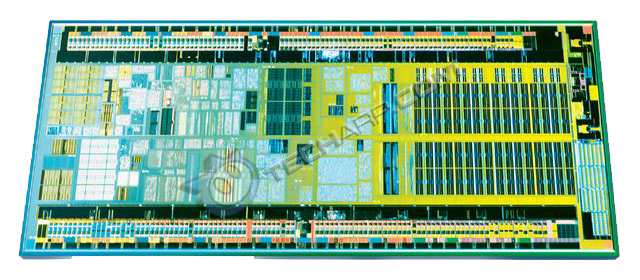The Silverthorne Processor
The new Silverthorne processor is a very small processor. Even with 47 million transistors, the Silverthorne is less than 25 mm2 in size. Intel claims you can put 11 Silverthorne processors on a single penny. It's that small. At launch, the Silverthorne processors will be available at clock speeds as low as 500 MHz up to 1.8 GHz. These are the current specifications of the new Silverthorne processor :
- Clock speeds of 500 MHz up to 1.8 GHz, with a 533 MHz FSB.
- TDP (Thermal Design Power) ranging from 0.6 W to 2.5 W
- 32 KB instruction + 24 KB data L1 cache, 512 KB L2 cache
- Supports SMT (Simultaneous Multi-Threading)
- Supports C6 (Deep Power Down) state
- Hardware virtualization support via Intel Virtualization Technology
The 500 MHz model will have a TDP of only 0.6 W but all Silverthorne processors will be able to drop to as low as 0.1 W while idling. Intel says they hope to eventually deliver a 2 GHz Silverthorne processor that would consume nothing more than 1 W of power.

At 1.8 GHz, the Silverthorne processor's single-threaded performance is roughly comparable to that of the Pentium M (Banias) processor. But because it has a dual-code, dual-issue, in-order 16-stage pipeline that also supports HyperThreading, it should perform faster than the Pentium M processor. For mobile Internet devices, that's quite a lot of processing power.

One of the reasons for the Silverthorne's amazing low power requirement is its fabrication on the smaller 45 nm process technology as well as Intel's new high-k dielectric and metal gate technology. The smaller process technology will also allow Intel to keep the cost low. Hopefully, that cost saving is passed along to the consumer.
For more information on the Intel Silverthorne processor, take a look at our initial coverage of the processor.
Intel Atom & Centrino Atom |
|
<<< Intel Atom & Centrino Atom Technology Report : Previous Page | Next Page : The Diamondville Processor >>>







 Add to Reddit
Add to Reddit
